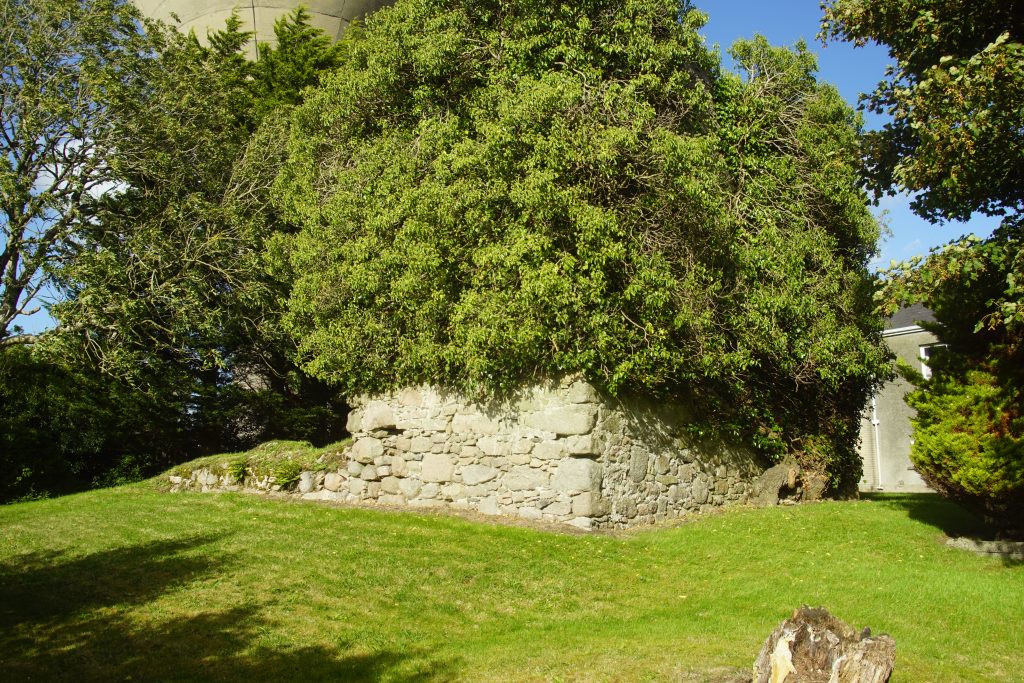Remains of Castle

Tower house built 1611 to the same plan as that used for Narrow Water Castle.
The Magennis clan, senior branch of the ancient Clanna Rory of Dalriada, rose into prominence in the twelfth century and established themselves as Lords of Iveagh, a district which roughly corresponds with the present Diocese of Dromore. Here they held sway for over 500 years. Their chief castle was situated at Rathfriland and their inauguration fort on the hill called Knock. As Lords of Iveagh and Princes of Dalriada the Magennises were acknowledged as overlords by the McCartans, the O’Lavertys and other smaller septs while they themselves acknowledged as overlords the Princes of the O’Neills of Tyrone.
Unlike the O’Neill family, the Magennises of Iveagh remained for long periods loyal to the English throne. Donal Magennis was knighted by King Henry VIII in 1542 and his son Hugh, who succeeded to the title was head of the house of Iveagh in the reign of Queen Elizabeth I.
Hugh’s son, Art Roe Magennis, also enjoyed the royal favour, and was created Viscount Iveagh by James I, on 18 July, 1623. Furthermore, he and the whole Magennis clan were, by the same monarch, confirmed in their ancient possessions in 1611 at the very time that the vast territories of O’Neill and O’Donnell were being planted with English and Scottish settlers. Art Roe Magennis was also given the right to hold two fairs annually at Rathfriland. He died on May 7,1629 and was buried at Drumballyroney, the principal burying place of the clan. He had married Sara O’Neill, daughter of Hugh O’Neill, Earl of Tyrone, and they had five sons: Hugh (the second Viscount), Conn (Knight of Newcastle), Arthur, Rory and Donal.
When the Insurrection of 1641 broke out Sir Conn Magennis of Newcastle took the lead, and the whole Magennis clan threw themselves with great vigour into the conflict. As the Lord Iveagh of that time was a minor (Arthur), Sir Conn became the leader. At the outset, Newry was captured by the insurgents under Sir Conn Magennis, and was held for ten weeks. It was re-taken by Lord Conway, for the King. In the following year it was again taken for the insurgents by Sir Felim O’Neill, and finally it was captured by a party of Scots under Munroe in May, 1642.
It is considered that there was an older and more extensive castle on the original site. The Historical Society hopes to investigate this further.
